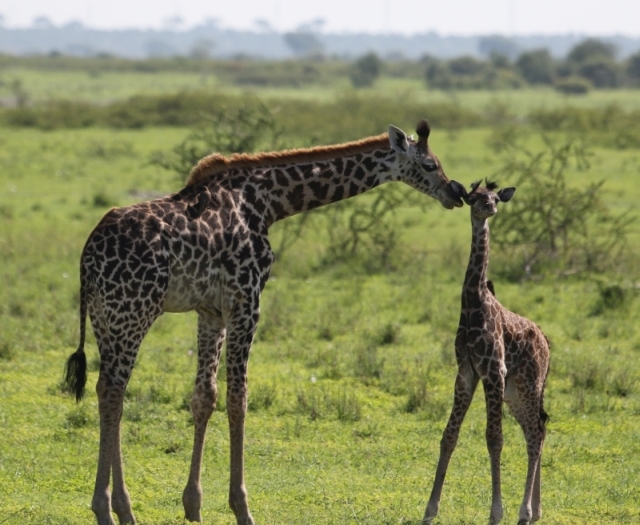|
To all the “cat people” out there: ever wonder about the evolutionary history of Mittens, Fluffy, and Socks? All domestic cats are thought to be descended from African wild cats, Felis silvestris lybica, with the first domesticated individuals appearing about 10,000 years ago in the Middle East.
African wild cats are common in the savanna, but are rarely seen because they are active mostly at night. We recently snapped this photo of a beautiful wild cat in the Serengeti.
0 Comments
Wild Nature Institute received a donation from Steven Free / GIRAFA, a Bay-Area artist is known for his giraffe character and Long Neck 4 Life branding. After hearing the story of Omo, the leucistic giraffe in Tarangire National Park, he designed a "Rare White Giraffe Air Freshener" and donated a portion of his proceeds towards our giraffe conservation work. Thanks so much, Steven, for caring about giraffes and spreading the message "Stand Tall Live Long!" To purchase an air freshener, visit the Long Neck 4 Life website.
Last night we were honored to celebrate St. Valentine's Day at a special dinner with the singular and indefatigable Dr. Jane Goodall. Her passionate and tireless efforts to further our understanding of non-human animals and champion the preservation of wild nature make her one of the world's shining lights, and definitely one of our great heroes. Joining Dr. Goodall on the day of love, to share and spread the word of love for all living creatures, was a wonderful and inspiring experience. We presented Dr. Goodall with a signed copy of our multi-lingual children's book The Amazing Migration of Lucky the Wildebeest. We will be working with her "Roots and Shoots" program to use our series of wildlife-focused children's books to instill ecological values in the next generation of young Tanzanians.
This baby giraffe on Manyara Ranch was so freshly newborn it was still wobbly on its legs. Every giraffe in the herd was coming near it and sniffing it with interest, including this older calf.
We are happy to have another giraffe join our database of more than 2,100 individuals we are monitoring and conserving in the Tarangire Ecosystem of Tanzania.  Our goal is to protect the wildebeest migration route from Tarangire National Park to the Northern Plains, where they give birth. Manyara Ranch is a critical piece to protect the Tarangire ecosystem from losing its migratory species and the wildlife tourism economy that depends upon them. We are using our research to create data-driven products like this map to inform conservation decisions in the region. We are advocating for speed bumps and Wildlife Crossing signs on the tarmac roads that slice across the migration route north and south of Manyara Ranch. Land use planning and law enforcement is also needed to maintain open rangelands between Tarangire National Park, Manyara Ranch, and the Northern Plains. We support community conservation in the area through education, land-use planning, Masai warrior anti-poaching patrols, and grassroots ecotourism. |
Science News and Updates From the Field from Wild Nature Institute.
All Photos on This Blog are Available as Frame-worthy Prints to Thank Our Generous Donors.
Email Us for Details of this Offer. Archives
July 2024
|
|
Mailing Address:
Wild Nature Institute PO Box 44 Weaverville, NC 28787 Phone: +1 415 763 0348 Email: [email protected] |
|





 RSS Feed
RSS Feed
